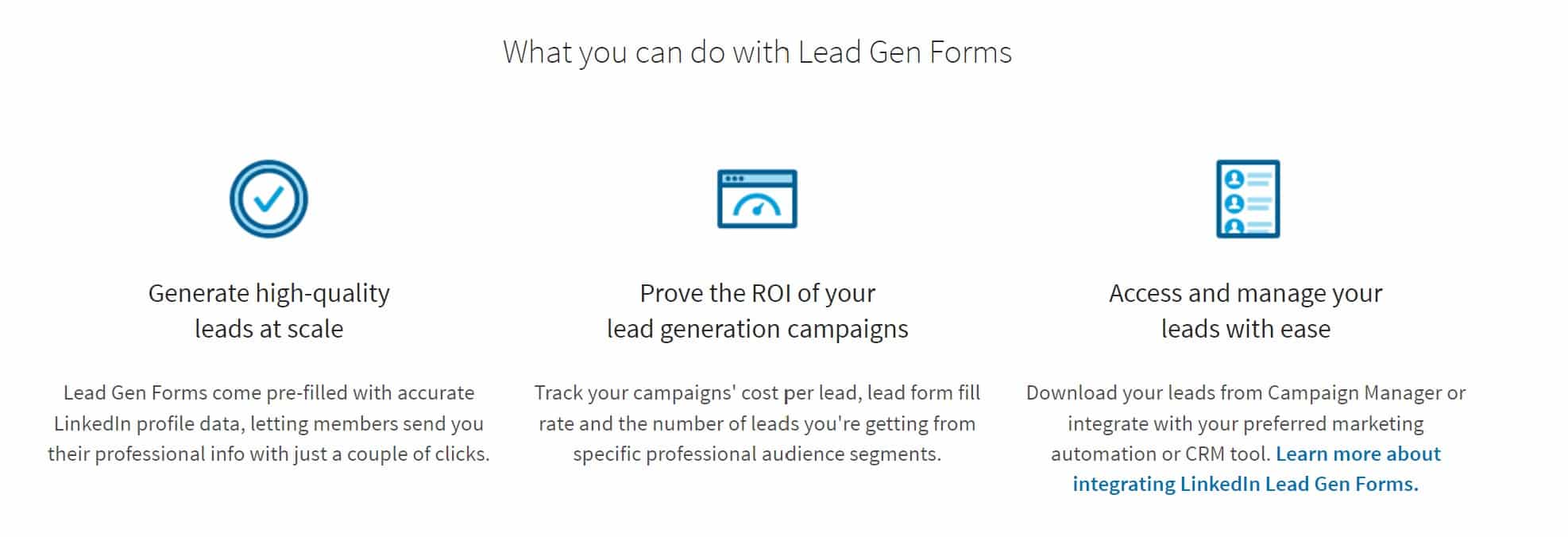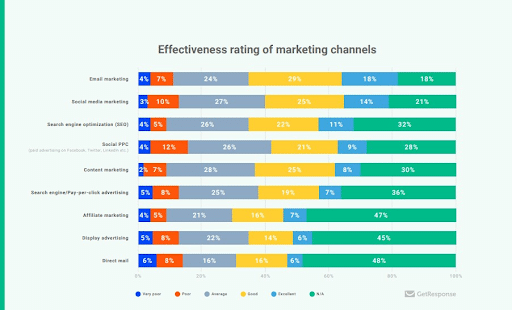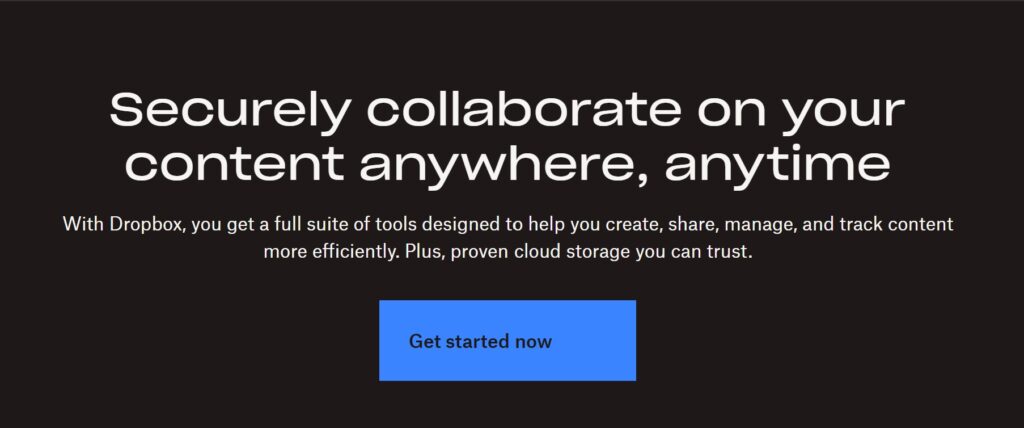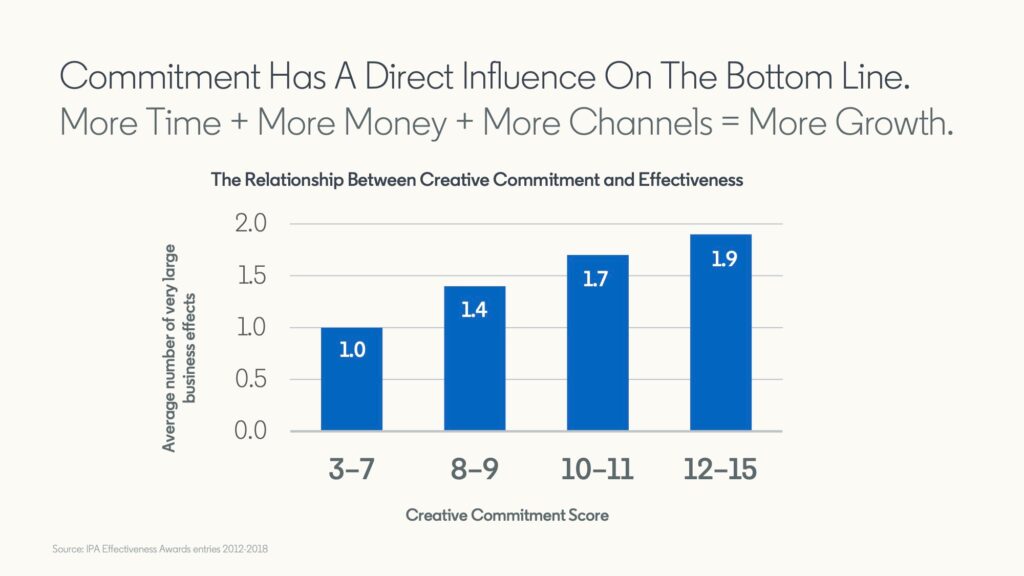
What We’ll Cover:
- What is Online Lead Generation?
- Lead Generation for Paid Ads
- SEO for Lead Generation
- Social Media for Online Lead Generation
- Online Lead Generation for Email Marketing
- Lead Generation for CRO
- Creative Services for Lead Generation
- FAQs on Lead Generation
What is Online Lead Generation? Why Is It Important?
If you want to grow your business online, then lead generation is a must. But, what exactly does that entail?
In the digital marketing space, online lead generation is the process of engaging potential customers through strategies like content marketing, social media, and email campaigns. The aim is to identify and nurture leads, with the goal of converting them into paying customers.
Everyone knows they need to generate leads online. The problem? Effectively executing a lead generation campaign.
Currently, 53 percent of marketers spend roughly 50 percent of their marketing budget on lead generation. 66% of marketers generate quality leads by dedicating 6 hours per week to social media marketing.
Lead Generation for Paid Ads
Want to know how to generate leads online in a hurry? Paid ads.
Google AdWords, in particular, is the fastest way to get leads online.
- There are over 160 billion monthly Google searches, with more than 5 billion searches conducted daily.
- Google AdWords holds 71.6% of the search ad market share in the United States.
Here’s the dirt:
For Google Ads to work, you need great ads and a great website.
Even if you’re not in the lead generation business, you simply can’t phone in an effective Google Ads campaign.
The most important elements for online lead generation include a catchy headline, a clear call-to-action, persuasive copy, engaging visuals, and proper keyword selection.
Make sure you’ve done your keyword research with tools like Google Keyword Planner.
And when it comes to the creative elements, test and test again – this includes your website.
AdWords Can Be Expensive
While paid ads offer targeted reach, fast results, and measurable ROI, they do come with their fair share of costs that can add up, potential ad blindness, competitive bidding in some markets, a learning curve for effective management, and the risk of ad fatigue with overexposure.
Any lead generation business owner will tell you that the average cost-per-click (CPA) in Google Ads across all industries is between $1 and $2 on the search network and under $1 on the display network.
Unfortunately, that number can vary widely depending on your industry and keyword competition. In 2023, the average cost per click in Google Ads is $4.22
While you can control your maximum CPC bid, you can’t control how much your competition is willing to spend.
Make sure numbers are working for you and you’re targeting a few less competitive keywords. Adjust your budget as you go along to see how your campaign performs. That’s how you’ll turn your business into a lead generation business.
Networks to Focus On
There are many emerging new ad networks, but some work better than others for online lead generation.
Not all networks are created equal, but let’s focus on the good.
Facebook is a great option for advertising, but you need excellent creative and a great landing page – much like you do for an effective AdWords ad.
YouTube is another great way to generate leads, with 59% of survey respondents citing that YouTube ads are more relevant than ads on television or other streaming apps.
But, you need excellent videos.
And ads. YouTube ads are an absolute gold mine right now. Currently, they have the highest click-through rate of all digital ad formats.
Then there’s Google display advertising. While it’s really better for branding, they have new targeting abilities that are really helping drive more conversions, mainly:
SEO for Online Lead Generation
The fact is all SEO takes time, but it has the biggest return at the end.
- The first position on Google search results on desktop has about a 30% click-through rate for unbranded searches.
- Approximately 60% of B2B businesses claim that SEO has the greatest impact on their lead generation.
Here’s the dirt:
Local SEO is the easiest option.
If you want to know how to start a local lead generation business, you should start with Local SEO.
It’s especially effective for smaller, local shops or companies that don’t necessarily need to appeal to a national audience.
One of the most important aspects of local SEO is ensuring the accuracy and consistency of your business information–name, address, phone number, etc.–across every online directory and platform. This information will help search engines like Google understand your business and its location, which is key for local search results.
Good news if that’s you – 76% of smartphone users searching for nearby businesses visit them within a day.
Keep that in mind if you want to know how to start a local lead generation business.
National SEO can take years for a new website in a competitive space.
But don’t get discouraged – SEO eventually will have the biggest return on online lead generation.
The wait will be well worth it once you’ve landed on Google’s first page.
Dealing With Google Penalties
You should never cut corners with SEO; you can get a penalty.
People who work for lead generation companies know that SEO used to be a much murkier business before Google began enforcing penalties.
Stay away from any black hat strategies, including:
Social Media for Online Lead Generation
Social media marketing will get you leads, but you have to be willing to put in the work.
- In a recent survey, 87% of participants reported seeing product information on Instagram and taking action in response.
- Of every 100 website visitors from search engines or social media, around 20 are typically ready to make a purchase right away.
Here’s the dirt:
Social media requires 5 to 10 hours a week on each site to be effective for online lead generation.
You have to put in the time to get the returns.
There’s no exact amount of time that works for everyone, so you’ll have to experiment and allocate to be as efficient as possible.
That may mean bringing in outside help like a marketing consultant who knows how to start a lead generation business.
Invest in Your Social Media
Lead generation through social media is a great way to expand your reach and connect with a precisely targeted audience while keeping costs in check. With the introduction of targeting options like Facebook remarketing and LinkedIn Lead Gen forms, social media online lead generation is more effective than ever.

LinkedIn Lead Gen Forms
However, navigating the crowded social media world and dealing with potential ad fatigue from users can be pretty challenging.
Frequent algorithm updates and the ever-changing landscape of data privacy regulations are also factors to consider.
To make the most of social media lead generation, be sure to approach it with a well-thought-out strategy, understanding both its strengths and potential obstacles.
You need to spend money on social media advertising to make it really worth it if you are a big business.
Social media advertising budgets have doubled worldwide over the past two years. In order to keep up, you’ll need to invest as well.
Snapchat
You are not going to see a good return from Snapchat.
Though they are trying to get better with new advertising options such as remarketing and branded filters, only a few brands see solid returns from Snapchat.
Unfortunately for most businesses, it’s simply a waste of time.
LinkedIn advertising and organic marketing are excellent for B2B.
Best known as the network of choice for professionals and lead generation companies, LinkedIn can be invaluable for B2Bs.
So much so that 80% of B2B leads are generated through LinkedIn.
To make the most of the platform, make sure you’ve set up your company page, are joining relevant groups (and participating in them!), and publish your own content with links to your site.
All businesses should be on Instagram.
Because frankly, everyone else is. And anybody who knows how to start a lead generation business will tell you that you need to be on Instagram.
Once you’ve set up your business account, remember to treat it like any other aspect of your marketing campaign.
Which means you don’t just start posting pictures. Instead, approach it with a strategy.
Pick your main themes, establish brand guidelines, and make sure you’re measuring and testing results.
For a complete guide to Instagram marketing, click here.
Email Marketing for Online Lead Generation
Don’t be fooled by all the new, flashy marketing channels out there – email marketing is still essential for online lead generation. So if you’re looking for a solid lead-generation business model, go with email marketing.
Email takes priority for 58% of people, delivering a higher ROI overall compared to other communication channels.

Rating Effectiveness of Email Marketing Channels
Here’s the dirt:
If you think email marketing is not right for your business, you are wrong.
Email marketing can work for every business.
Here’s why:
- It’s an easy way to reach customers – especially through mobile
- It’s easily integrated with other marketing tactics
- It’s a great way to keep customers and leads informed of company news, deals, coupons, etc.
- It’s inexpensive
If it isn’t working for you, you’re likely just not approaching it right.
Email Marketing Strategy for Lead Generation
You need to have an email acquisition strategy and an email execution strategy.
Email acquisition: how will you grow your customer email list?
In order to effectively collect, you need to answer questions like:
- Who are your customers?
- How do they interact with your brand?
- What will entice them to leave their contact information?
- What information is most valuable to you?
- Email execution: What and when will you send?
A few key elements to keep in mind when you’re building your strategy:
- Segment your lists (customers vs. leads, daily vs. weekly or monthly receivers, etc.)
- Make sure all emails are mobile-friendly
- Repeatedly test your copy and design
- Monitor open rate, click-through rate (CTR) and unsubscribed
Lead Generation for CRO
CRO focuses on making the most of your website’s traffic. The websites that perform the best have a conversion rate of 11%, while the average website conversion rate is 2.35% across all industries.
Here’s the dirt:
The critical components of a CRO lead gen marketing strategy include compelling calls to action and smooth user journeys.
In addition to being cost-effective and providing valuable insights into consumer behavior, CRO has the potential to increase conversions and boost revenue without increasing your traffic.
Run A/B Tests
Start by analyzing your audience’s behavior through A/B testing and optimizing various elements of your website, in order to create the most optimal user experience to drive conversions.
You can A/B test elements of your home page, landing pages, call-to-action buttons, content and more.

Dropbox Call to Action Example
Once you set up a test, let it run until you see a difference in results, clearly showing which version of the test your user base prefers.
This data-driven approach enables businesses to make informed edits on their site, allocate resources effectively, and drive a higher ROI.
Keep in mind though that process can be time-consuming and may require A/B testing to fine-tune strategies. Striking the right balance can be tough, but ultimately worth it.
Creative Services and Lead Generation
Creative services are central to successful lead generation.
However, most businesses don’t use it to their advantage. In fact, 75% of B2B ads score a 1 star or less according to LinkedIn.

Crisis of Creativity in Advertising – LinkedIn
Now even if you don’t run a B2B business, dedicating resources to best-in-class creative is valuable for any company in any industry from home services to healthcare.

Importance of Commitment to Creative Services
Here’s the dirt:
The importance of compelling design and content cannot be overstated.
Enticing visuals and persuasive messaging are key to engaging potential customers. Some of the positives of creative services include the ability to stand out in a crowded space, fostering brand identity and loyalty, and conveying complex ideas more effectively.
First impressions really do matter, and creative services ensure that landing pages, websites, email campaigns, advertisements, social media, and virtually everywhere you appear online are visually appealing and cohesive.
Creative services provide the emotional and visual appeal necessary to capture the interest of potential leads, convey the benefits o a product or service, and guide customers to convert.
Online Lead Generation FAQs:
1. Why is online lead generation important for businesses?
Online lead generation is critical because it connects your business with potential customers. It’s the driving force of growth and can help you reach and engage your target audience effectively.
2. What other tools can help streamline my online lead generation process?
Tools like CRM systems, email marketing platforms and social media ads can all be used to streamline lead generation. They enable you to efficiently track, communicate, and engage with prospects.
3. How can I measure the effectiveness of my lead generation strategies?
You can gauge the success of your online lead generation efforts through KPIs like conversion rates, click-through rates, and customer acquisition costs.
4. How do I nurture leads once I’ve generated them?
Nurture leads by offering valuable content, personalized communication, and a consistent follow-up strategy. Building trust and rapport is essential for conversion.
5. Are there specific lead generation strategies for B2B vs B2C?
Yes, B2B strategies often involve LinkedIn and email outreach, focusing on professional networking. B2C strategies utilize social media and e-commerce platforms to reach a broader consumer audience.
6. How can webinars and events enhance online lead generation?
Webinars and events establish authority and engage potential leads. They provide valuable content and networking opportunities, fostering relationships that lead to conversions.
7. Do popups work for online lead generation?
That depends on how you use them and who’s in your target market. A popup that annoys people by appearing on the screen while they’re trying to read your content is often going to get clicked away as fast as possible.
However, exit-intent popups are much more user-friendly. They’re less intrusive because they only appear when the visitor is trying to navigate away from your site.
It’s worth noting, though, that countless digital marketers rely on popups to generate leads. It’s safe to say that they’re effective.
8. What are common mistakes to avoid in lead generation?
Common mistakes include neglecting the importance of a strong call-to-action, failing to segment your audience, and not optimizing your website for conversion.
9. How do I optimize my conversion funnel for better lead generation?
Optimize by creating a smooth user experience, making sure your messaging aligns with customer needs. Be sure to test different approaches to refine the conversion process.
Launch Your Online Lead Generation Strategy Now
Are you ready to take your business’s online lead generation efforts to the next level and harness the power of SEO lead generation? Ignite Visibility has the tools and expertise to help you maximize your digital presence, enhance your customer interactions, and drive business growth.
We’ll help you with:
- Lead Generation for Paid Ads
- Lead Generation for Local SEO
- Lead Generation for Social Media Channels
- Lead Generation for Email Marketing
- Lead Generation for Conversion Rate Optimization
- Lead Generation with Creative Services
Are you ready to start? Contact us now and let’s set up a plan to effectively generate leads and grow your conversions.